Text
Educate Yourself With CPR Class Columbus Coaching
· How many people can spot a heart attack in progress and provide first aid?
Knowing what to do when someone is unconscious and not breathing is frequently less crucial than recognizing the early warning signals.
If you want to offer someone the best chance, you should be capable of performing powerful and efficient chest compressions and opening someone's airway so that you may give them effective rescue breaths to reoxygenate them. The best possibility of them surviving is as a result.
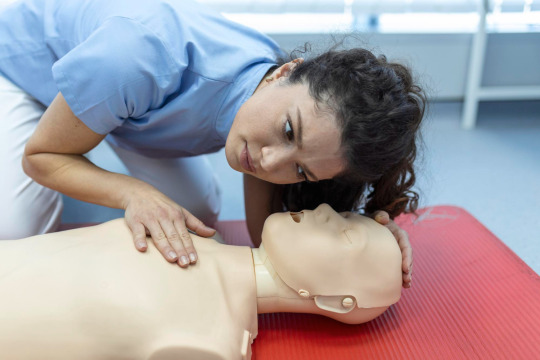
· Why do you still require breaths?
An adult who experiences a cardiac arrest still has some oxygenated blood in their system, which can keep them alive for three to four minutes while someone applies pressure to their chest to circulate that blood throughout their body. After this period, or after roughly 30 compressions, they will begin to run out of oxygenated blood. According to the doctors' recommendations, giving the victim adequate compressions while also breathing for them is the most efficient kind of CPR Class Columbus treatment that gives them the best chance.
· For children
Children should begin with five rescue breaths as they are unable to hold onto oxygen in their bodies, therefore you should tilt their heads to remove their tongues from their throats and breathe into them to cause their chest to rise. 30 chest compressions should be performed next, pushing down on the chest by roughly a third and pushing quickly and forcefully, just like in the advertisement. Continue with two breaths and thirty compressions after getting an ambulance on the way.
· Dealing with BLS for healthcare providers Columbus
Healthcare practitioners who need to know how to administer CPR and other lifesaving techniques in a variety of in-hospital and out-of-hospital scenarios should take this course. Initial tutoring takes around 4.5 hours to finish, including practice and assessment of the abilities.
· Course content
The following topics will be covered in this American Heart Association (AHA) course:
1. Important modifications to basic life support reflecting the most recent American Heart Association Guidelines for Cardiopulmonary Resuscitation and Emergency Cardiovascular Care reflect new science.
2. Critical ideas for effective CPR.
3. The Chain of Survival by the American Heart Association.
4. 1-AED and Cardiopulmonary resuscitation for infants, children, and adults.
5. 2 Rescuer CPR and AED for adults, children, and infants.
6. Adult, child, and newborn rescue methods vary from one another.
7. Bag-mask approaches for adults, children, and infants.
8. Adult, child, and newborn rescue breathing.
9. Using an advanced airway, resuscitation can relieve choking in adults, children, and infants.
· Getting in touch with CPR Class Columbus mentor
If you are highly interested to be a prospective participant in BLS for healthcare provider Columbus course, make sure to reach out to the CPR Columbus representative by visiting the site or dialing 614-321-2094.
0 notes
Text
Professional Needs For BLS Class Kansas City Coaching

1. For Yoga Instructors
If you teach yoga, you probably know how to practice the downward dog, but do you also know how to perform CPR to save a life? The likelihood of survival diminishes by 7–10% per second; therefore learning CPR could mean the difference between life and death in a medical emergency. AED use, the Heimlich technique, and high-quality chest compressions should all be things you are capable of doing with confidence.
We advise doing the American Heart Association BLS Class Kansas City CPR and AED training if you're a yoga instructor; this course will cover the following.
Breathing with the use of a pocket mask.
Providing chest compressions of the highest caliber.
AED, or automated external defibrillator usage.
Two rescuers performing resuscitation.
Additional information.
2. For Chiropractors
Being a chiropractor is a fulfilling profession because you get to use your knowledge of human anatomy to treat musculoskeletal problems and relieve pain in patients. Your hands are one of your most valuable assets, but do you know how to use them to provide excellent assistance? Would you be willing to intervene to save their life?
We at CPR Kansas City offer chiropractors excellent training. Blood is given to the victim's brain and lungs during cardiopulmonary resuscitation, which can double or treble their chance of survival. For chiropractors and chiropractic students, learning it is not only crucial but also mandated by the state board. We meet your needs by offering superior BLS courses from the American Heart Association.
3. For First Responder
When there is a car accident, heart attack, gunshot, or fire, you arrive on the scene as the first responder. The work might be mentally and physically draining, but it has a purpose—to save a life. Knowing how to recognize a cardiac arrest or heart attack in an emergency is crucial for quick action. For your patient, every second counts toward life or death.
Our Offerings
We are pleased to offer training from the American Heart Association on behalf of our team of former EMTs, paramedics, and first responders. With the help of our instructions, you will be able to perform effective chest compressions, operate an AED, and perform the Heimlich maneuver. Each of our instructors takes great delight in ensuring that every student is ready for a crisis. Students are welcome to ask questions about the supplied material in the relaxed setting that we provide.
BLS training from AHA CPR Kansas City is typically necessary for first responders. Students who complete the course are awarded a BLS certificate, which is good for two years.
Get Connected
In case you are interested in a comprehensive coaching from highly experienced mentors following the AHA pedagogy, drop in to attend the workshop. You may also talk to the representative and book your seat by dialing 913-998-7499.
0 notes
Text
Learn The Resuscitation Basics With CPR Columbus Ohio
Although the internet is a poor replacement for formal training, mobile devices put a lot of knowledge at our fingertips. Especially if you're hurt and by yourself, and lack time during an emergency to look through articles, peruse the comments, or examine a diagram.
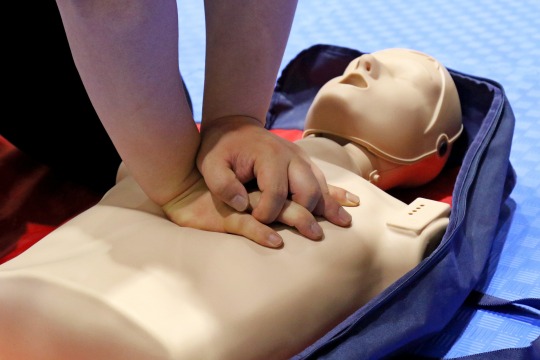
The most effective approach to acquiring the knowledge and assurance required to assist someone (or yourself) in an emergency is through hands-on training with an experienced instructor. Review the first aid and resuscitation “Do’s” and “Don'ts” below to discover a few of the concepts covered in our first aid and Cardiopulmonary Resuscitation classes at CPR Columbus Ohio.
DO seek authorization; Good Samaritan laws demand it
The majority of nations have Good Samaritan laws that provide bystanders who voluntarily render precious aid with protection. The provider must apply for authorization to be eligible for protection (if the victim cannot reply, consent is implied).
Don't rush to render aid; instead, wait for emergency services
Emergency healthcare personnel often respond at an accident scene within 7 to 14 minutes. Before offering aid, confirm that trained personnel are on the way.
Don't bend your elbows when giving CPR because you'll use up valuable energy
It takes a lot of energy to perform resuscitation with your arms. You can use your back and shoulders to support your weight by keeping your arms straight. One can do chest compressions more accurately and with greater endurance by using more muscles.
RESIST the urge to sway back and forth between chest compressions; it is exhausting and ineffective
Giving chest compressions is not difficult, but it can be exhausting. Your instructor will give you energy-saving advice while you practice CPR on a mannequin that has been specially created.
DO NOT turn a patient who is unconscious on their side unless you fear a neck or spine injury
By turning them onto their side, you can keep them from choking on any liquids that can stick in their airways, such as blood or vomit.
Removing blood-soaked gauze could cause blood clots to break up, therefore FORBID doing so
Maintain the pressure and, if necessary, add more layers of gauze.
If a tooth is knocked out, DO replace it because root protection comes first
Try placing the tooth back in its socket if the patient is breathing and speaking.
Rinse the tooth gently if it is unclean, and abstain from touching the root. Evade submerge the tooth in water (this can damage the root).
Put the tooth in the patient's mouth or a glass of milk to remain in its socket. If feasible, take the patient to emergency dental care in less than 30 minutes.
Enroll for a CPR course
Solely receiving online training is insufficient as resuscitation is a physical ability, much like dribbling a ball or lifting weights. An expert local instructor may render you helpful advice and comments in a proper manner, which is important.
Do not skip the first aid and CPR refresher course
Everyone, including physicians and nurses, needs to update their resuscitation knowledge every few years. You can avail of a reference card from your instructor, but wouldn't you rather be thinking about your abilities when it counts?
Be in touch withm CPR Columbus Ohio for relaxed training and assists the victims from getting choked. Dial 614-321-2094 for better clarification.
0 notes
Text
Treat Asthmatic Attack With CPR Class Columbus
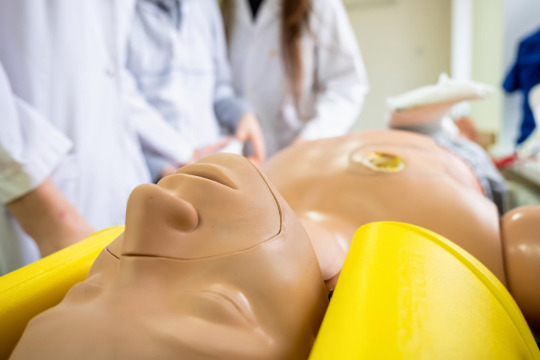
When someone has a bronchial asthma episode, their airways become inflamed and constrict, making it difficult for them to breathe. Due to the excess mucus the airway produces, air cannot enter or leave the lungs. The majority of kids have this chronic condition.
Moreover, bronchospasm, or the tightening of the throat muscles during an asthma episode, is a common symptom. Asthma episodes can range in severity, from very mild to potentially fatal according to CPR Class Columbus mentors.
What are the symptoms of Asthma?
Fast breathing, pressure, and tightness around the chest.
Persistent wheezing when breathing in and out.
Sternum constriction.
Walking difficulty.
Anxiety/panic.
Sweating and having blue nails.
When an individual is subjected to triggers, shock, or pollutants, an attack occurs. The majority of people only experience brief, moderate symptoms that go away shortly after taking medication. Other instances are fatal and serious. Acute medical intervention is necessary for severe attacks. Early identification of an asthma attack's symptoms is essential to receive the proper care. If others are not treated right away, the victim's breathing gets worse and gets louder and more laborious.
What takes place in lung function during an Asthmatic Attack?
The lungs constrict during an attack, restricting airflow and creating a wheezing sound. The lungs tighten and the wheezing sound disappears as the illness develops. The quiet state, often known as the silent chest, is serious, and you should dial 911 or take the victim right away to the hospital. The common misconception is that when the wheezing ceases, the person becomes better. Without treatment, the person will cease speaking and have a bluish tinge on their lips (cyanosis). The victim may pass out, become unconscious, and eventually die as their body organs run out of oxygen.
Patient Care: First Aid experiencing an attack
Without prompt first help, the patient's breathing could get worse and their wheezing could get louder. Acute emergencies are treated in various ways, but frequently with medications, such as quick-relief albuterol inhalers. The majority of asthma medications are best taken through inhalation.
Call emergency medical services by dialing 911 if you come across a person who is experiencing an asthma attack. It's important to remember that the victim's situation could quickly get worse.
Initially, allow the victim to sit comfortably.
Any restrictive garments should be relaxed.
Allow the victim to use their inhaler immediately if they have one.
Use an inhaler from your first aid kit if none are accessible.
Never use another person's inhaler.
Undergoing training from CPR Columbus
First aid training classes encompass asthma episodes and first aid. Without treatment, it can be a serious ailment that results in the victim's death. There are simple options for in-person first aid training. Anyone can participate in the CPR Class Columbus course, regardless of age or educational background. Everyone ought to receive training in how to treat such emergencies since you never know whose life you could save. Visit the site or dial 614-321-2094 to know more.
0 notes
Text
Learn First Aid Tutelage With The AHA CPR Class Columbus
When a person comes into direct touch with an electrical current, burn injury can harm body tissue or internal organs. It accounts for 1000 deaths per year in the US, with a 3–15% mortality rate. This article will teach you how to treat and avoid electrical burns if you are a parent with a child at home or a worker who is at risk of shock and burns.
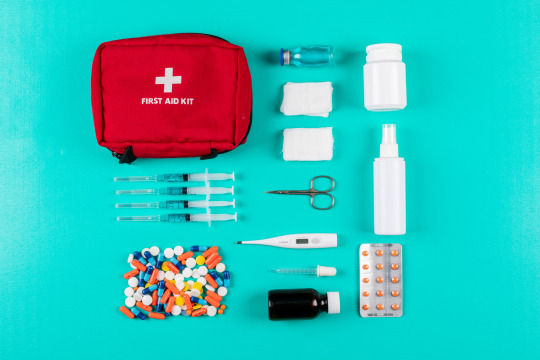
Getting enrolled in CPR Class Columbus First Aid training will help to know the precautionary steps required during emergencies.
An electrical burn is what?
When electricity comes into touch with the skin, it causes skin burn known. Numerous electric sources, including lightning, stun guns, and contact with household currents and electrical appliances, can cause it.
Your body can conduct itself when it comes into contact with your skin. Electricity can harm tissues and organs when this occurs. This injury can be minor, severe, or even fatal. Among the organs that are frequently harmed are the following:
Heart: Unusual heartbeats are a possibility. "Cardiac arrest" refers to when their heart stops beating unexpectedly.
Renal system: Kidney function may cease to be normal.
Bones and muscles: If the muscles suffer a serious injury, chemicals from the wounded muscle cells may escape into the blood.
Nervous system: Symptoms include fainting, muscle aches, and damage to the eyes or ears.
Types
The three types of burns are as follows:
An injury can come in three different forms. They are:
1. Electrical burns - It can happen if someone handles electrical wire or equipment that has been misused or incorrectly maintained. The hands are frequently affected. Among the most serious wounds, you might sustain are electrical burns. This calls for prompt care to be given to them.
2. Arc-blasts - When strong, high-amperage currents arc across the air, they cause this electric burn. In many cases, this is brought on by worn-out equipment.
3. Thermal burns - If there is an explosion or if electricity ignites an explosive element in the air, thermal burns (thermal injuries) could develop. Combustible dust, fumes, or gas accumulation may cause ignition.
CPR Class Columbus First Aid
The first aid for an electrical burn is to call 911 or other emergency services if the victim has come into contact with an electrical source. Apply these first aid techniques to small or light burns. Consult your doctor if your symptoms don't go away, or visit the emergency room at the hospital that's closest to you.
i. Avoid making physical contact with the person who has an electrical burn.
ii. Remove the plug from the appliance or switch off the primary power source.
iii. Try to get the person away from the energy source if you are unable to switch off the power. Pushing the patient away from the source should be done carefully by standing on a dry surface or using a piece of dry wood.
iv. Once it is secure, make sure the subject is breathing and aware. Next, speak to the person while softly touching them.
v. After disconnecting them from the electrical source, see if the person reacts to touch or conversation. Start CPR as soon as possible if the electrified individual is not breathing.
vi. If the person has a burn, remove any easily removable clothing and rinse the area with cool water until the pain subsides. Finally, administer burns first aid.
If you are interested to save lives by undergoing proper tutelage, feel free to visit the AHA CPR Columbus. Dial 614-321-2094 for immediate booking.
0 notes
Text
Understanding The Value Of The AHA CPR Columbus Training
Anybody, anywhere, at any time, can develop this ailment of Sudden Cardiac Arrest. This is one of the reasons organizations are making increasingly more attempts to raise public awareness of the issue. The ability to perform basic first aid and use available equipment safely can mean the difference between life and death.
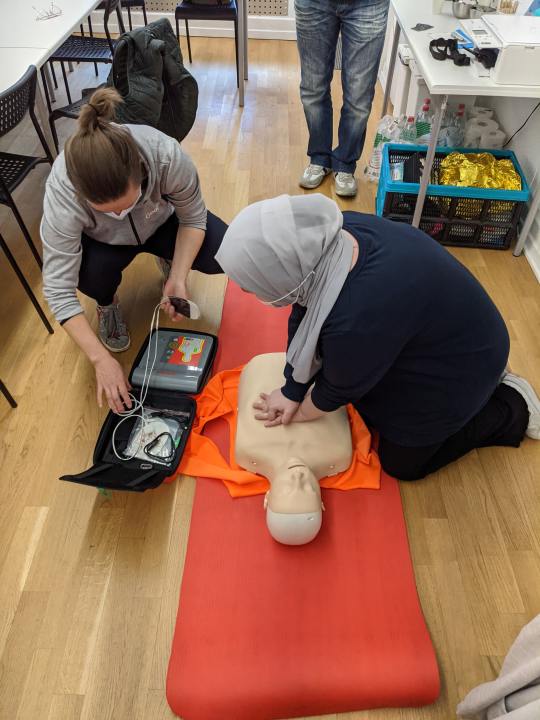
Cardiac arrests
Heart failure results in an irregular heartbeat that the heart is unable to maintain. The victim eventually loses consciousness when the heart stops pumping blood. The general population would be aware of the signs of a cardiac arrest victim by keeping this in mind:
1. Unresponsiveness,
2. Erratic breathing, and
3. No pulse.
There are occasions when a patient experiencing a cardiac arrest may not have a pulse, so while some individuals tend to search for one, it is generally fair to presume that you cannot discover one. As soon as you notice a sufferer who is unresponsive and having trouble breathing, presumes that resuscitation is necessary immediately.
Tutelage from CPR Class Columbus
Training programs include Resuscitation and Defibrillator instruction together for a purpose. Without an AED, CPR might help the person wait until expert aid arrives. By performing, the essential organs can still receive at least the bare minimum of oxygenated blood. The patient's chance of life decreases the longer resuscitation is not administered.
In fact, due to the lack of blood at the moment of the arrest, even if the person survives, there may be serious brain damage. It is the first aid technique, just as applying antiseptic to a wound helps prevent infection, but only an AED can help restore the heart's regular rhythm.
Importance of an AED program
ü It assesses heart rhythm and shocks the heart with electric shocks delivered through the chest wall.
ü The programs are essential as they treat patients until help arrives and ultimately save lives. These devices should be used if a person has collapsed and is not breathing normally.
ü It should always be available because they enhance survival rates by 60% and have the power to save lives. Employers should also provide staff with training sessions so they are adequately versed in CPR and AED techniques. Consider researching how and why you ought to develop an AED program if one doesn't already exist.
Importance of Cardiopulmonary resuscitation
Your personnel will be more comfortable helping someone who has suffered a cardiac arrest if they have undergone the workshop. Under the AHA's recommendations, it should be given as soon as possible and AED use should begin within the first 10 minutes of an attack. With the right training, your staff will be able to respond effectively. The instructions should be incorporated as quickly as feasible into new employee training by facility management, who should also arrange routine training updates.
AHA-approved CPR training
If you are looking for a reliable knowledge partner, get in touch with the mentors of CPR Class Columbus for stress-free learning. Dial 614-321-2094 to reserve a seat.
0 notes
Text
Role Of Heart With BLS For Healthcare Provider Columbus
One muscle carries the bulk of the work required to maintain life. Without a doubt, the heart is that muscle. The ability of a fist-sized object to support a body more than ten times its size has long captivated men. Even though there are numerous publications on the subject, there are still a few things that you may not be aware of.
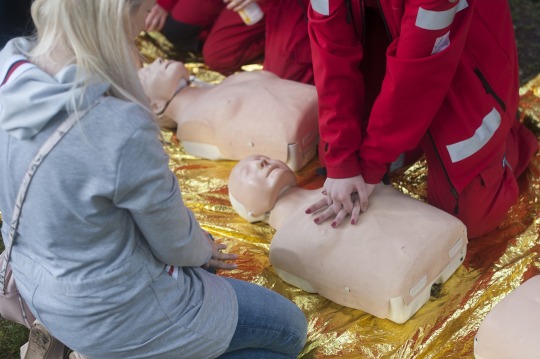
Let us explore some unknown facts with BLS for healthcare provider Columbus
The fact that the human heart does not initially develop as a muscle with the shape of a fist is just one of the many things that few people are aware of. The heart develops from a tube-like organ resembling those found in goldfish.
The "tube" has to double back into a horseshoe-like shape since the fetus's other organs and muscles are also expanding at a tremendous rate. After a few more weeks, this horseshoe begins to grow two chambers. A third chamber forms after a few more weeks. This continues until the person's heart, which was originally a "tube", develops into a four-chambered muscle that is about the size of their fist.
Location
The heart is thought to be in the center of the chest, but little is known about the fact that most of the work is done on the left side of the body. It was once mistakenly thought to be on the left side of the chest for a variety of reasons, one of which is due to this. Why does the left side of my body pump more powerfully than my right? Since the right side of the heart is in charge of the lungs and the left side of the heart is in charge of carrying blood to the farthest areas of the body.
Crucial role played
Have you ever disagreed about whether the heart or the brain is more crucial? You can now confidently reply to the question. The Sino-Atrial Node, a group of neurons that are thought to be self-starters since they do not require outside stimuli to function, may be found inside, which explains why. These neurons are now in charge of firing, maintaining the regular rhythm, and allowing the brain to function normally. To open the valves and permit blood to pass from one chamber to the next, the heart muscles alternately twist and relax in response to an electric signal from the SA node.
Common mistake
Although most people mistakenly use the terms "heart attack" and "cardiac arrest" interchangeably, they do not mean the same thing. During an attack, the blood vessels leading to the heart are shut off, depriving of oxygen. However, in cardiac arrest, something at the very least causes the heart to skip a beat. But both result in tissue necrosis in the victim's major organs, which eventually results in death.
Undergoing BLS for healthcare provider training
Your best course of action would be to ensure that you have at least an AED unit available so that you can deal with the last situation in particular. An option for this would be to confirm that everyone nearby has completed the American Heart Association CPR certification training course. Reach out by dialing 614-321-2094.
0 notes
Text
Learn Key Elements With CPR Class Columbus Coaching
It's important to always bear in mind the key elements of good CPR. This includes rate, force, and speed. It may be possible to save a person's life after a cardiac arrest by remembering these three things. When it comes to handling a cardiac arrest episode as it occurs, having a calm mind is always crucial.
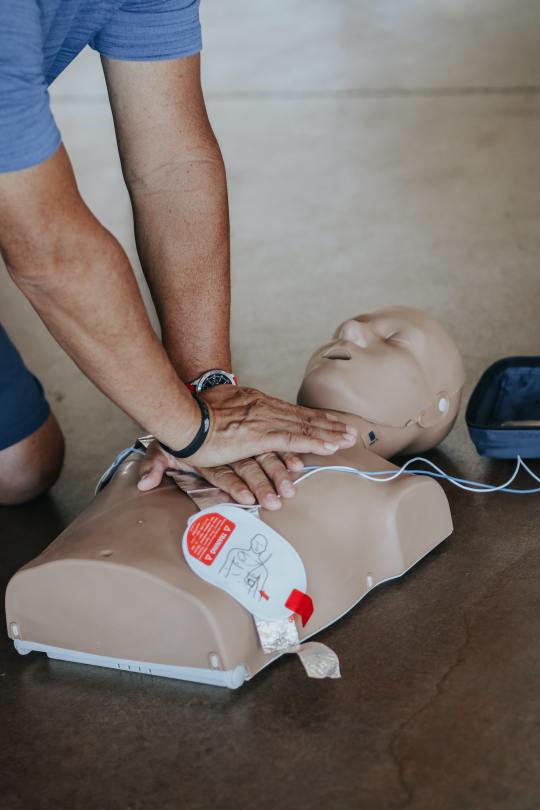
Importance of CPR training
If a person experiencing cardiac arrest is nearby, emergency responders—even bystanders—must sharpen their minds. There have been instances where people in a panic were unable to assist those who were having a cardiac arrest, completely reducing the likelihood of recovery.
This is why receiving CPR Class Columbus training is important, since it not only teaches the skills to utilize in the event of cardiac arrest but also educates responders on how to handle an occurrence like this.
Establishing a chain of command
Establishing a chain of command that begins with them is one of the most crucial skills that responders will acquire during training. The responder is the one who will perform CPR, thus they should be the most composed and able to direct others to help. Tasks should only be assigned to specific individuals, not a crowd, as the crowd mentality would assume that someone else will complete the assignment anyway.
If everyone had this mindset, nobody would. The first thing that needs to be done is to call emergency services. If no one else is present, this responsibility should be given to a single person in the crowd.
Initiating chest compression
Compressions must be carried out right away after contacting emergency personnel. The survival rate will decrease by 10% for each minute that compressions are not performed. Due to the lack of blood that carries oxygen to the brain, a person can be deemed brain dead at four minutes. Given that some responders are averse to conducting mouth-to-mouth; this does not necessarily imply that doing so is crucial.
For those who are not trained in CPR, mouth-to-mouth resuscitation has been ruled optional. However, compressions are always given great emphasis by skilled individuals. The likelihood of survival has increased as a result of a swift intervention.
Compression with accurate force and speed
The right amount of pumping force and speed are necessary for successful compressions. The compressions are ineffective without them. The responder's quick response time might have been for nothing. There should not be any weak compressions. It makes no sense to worry that the ribs will break as the patient is already technically dead.
Most people would be prepared to pay the price of a rib if it meant being brought back to life. The rate should also be consistent. Since the blood flow to other sections of the body is the same, compressions performed excessively slowly or irregularly are useless.
CPR Columbus certification
With today's rising death rates from cardiac arrest, taking note of the aforementioned factors is essential for successfully maintaining a patient's survival rate. Learn from the American Heart Association CPR Class Columbus right away to do your part. Dial 614-321-2094 for talking to the representatives.
0 notes
Text
Survival Rate Determination Through CPR Class Columbus
What are the three variables that affect the survival rate?
Several factors improve the likelihood that heart attack and cardiac arrest victims who are not already hospitalized will reach the facility in time to recover and be allowed to leave there safely.
Having a witness to the incident and performing CPR Class Columbus application as quickly as feasible are among these considerations.
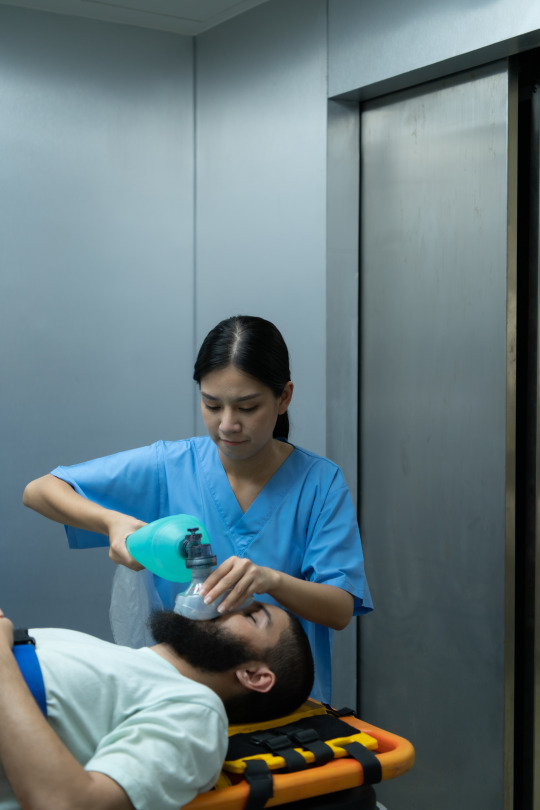
1. CPR and EMS provided by onlookers
Emergency medical personnel are taught to conduct CPR at a rate of 30:2 compressions to ventilation. Blood is manually pumped to the brain and other important organs with each chest compression. The likelihood of survival can be improved by even partially restoring blood flow.
Recovery rates
Bystander CPR has lower survival rates than resuscitation performed by a medical professional, although it can increase the likelihood of survival. Due to this, the American Heart Association advises everyone to learn compression-only CPR (performing uninterrupted chest compressions without rescue breathing). Additionally, studies show that receiving excellent instruction and starting resuscitation as soon as feasible after the arrest considerably increase the chances of long-term survival.
2. Whether anyone saw the Cardiac Arrest
In a clinical experiment of patients, it was discovered that cardiac arrest victims who had a bystander witness had higher survival rates than those who experienced cardiac arrest alone (without any witness).
3. CPR location
Comparing post-CPR survival statistics in Europe, North America, Asia, and Oceania, researchers discovered a better survival rate in Western nations. The standard of bystander CPR may be lower there as it is less common in most Asian nations than it is in Europe and the US.
Additionally, in various non-Western nations, there are lesser standards for when an emergency medical responder can begin the process. For Asian migrants, they might result in poorer survival rates.
By gender, the CPR success rate
When CPR is started following a heart attack or cardiac arrest, there is a troubling gender difference. Males and females have comparable odds of getting help at home, but not in public places. In comparison to women, who received CPR assistance in public at a rate of only 39%, 45% of men had SCA. The odds of men surviving are 23% higher than those of women, and they are 1.23 times more likely to receive assistance from bystanders.
Differential success rates
At every step of care when resuscitation is tried, women had worse survival rates. The difference in the anatomy of men and women is what causes this gender disparity. For instance, as women have breasts, spectators are hesitant to perform CPR on a woman, which causes some individuals to feel uneasy and unsure of whether or not to act.
Concluding impact
When American Heart Association CPR Class Columbus is administered promptly following cardiac arrest and by proper protocol, it can improve long-term survival rates. The success rate may be lowered since not everyone is knowledgeable about how to conduct it, and even those who are may hesitate and start too late out of fear.
If want to learn the techniques appropriately, then get connected by visiting 5202 Bethel Reed Park, Suite 140, Columbus, OH 43220. For elaborate information, go to https://acls-bls-columbus.com
.
0 notes
Text
Certifying With BLS For Healthcare Provider Columbus
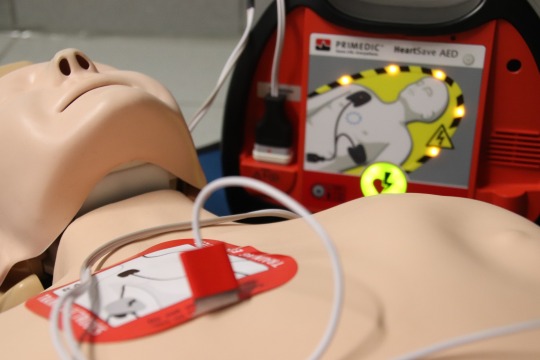
The abbreviation BLS may come up in your research if you've been interested in learning first aid and CPR. These are fundamental certifications for healthcare providers that are of the utmost importance. Even if your job doesn't require you to save lives, becoming certified can be highly beneficial. This blog will discuss what Basic Life Support Certification entails and why it's important for current healthcare workers and medical students.
What does BLS certification entail?
Basic Life Support refers to the knowledge and abilities needed to offer immediate medical assistance to adults and children in the event of a cardiopulmonary emergency, breathing emergency, or other severe emergencies. It imparts fundamental life support skills for use in pre-hospital and in-facility settings for single-rescuer, multi-rescuer, and effective team resuscitation.
You will learn how to spot several life-threatening situations, such as heart attacks and cardiac arrests, as soon as they occur. Additionally, it will show you how to offer an Automated External Defibrillator, provide adequate ventilation, and perform effective chest compressions.
Emergency medical technicians, paramedics, and other healthcare professionals can provide basic life support procedures outside of a hospital setting. Due to the additional skills they frequently need to employ, BLS for healthcare providers Columbus classes are commonly taken by those in public safety and other healthcare-related professions like nurses and doctors.
What does a BLS certification course include?
Your training for this certification will help you become competent in:
CPR for Infants, Children, and Adults (Chest compressions, airway management, and rescue breathing).
A network of survival.
Basic first aid for injuries, poisoning, foreign body airway obstruction, hemorrhage, fractures, etc.).
Automated external defibrillators (AED) correct use (AED).
Emergency oxygen administration barrier device-enhanced ventilation.
Rescue teams' efficient resuscitation procedures.
Evaluating the rescue situation's safety.
Who needs to be certified?
Basic life support training and certification are intended for healthcare workers and medical professionals due to their employment responsibilities, unlike CPR, which can be obtained by anybody. As a result, the majority of professional rescuers, including nurses, paramedics, and lifeguards, are mandated to train for and acquire their BLS certification by their employment.
Healthcare workers must be able to identify a range of life-threatening situations, perform high-quality CPR and other fundamental cardiovascular life support techniques, use an AED correctly, and alleviate choking in a fast, safe, and efficient manner.
The importance of BLS accreditation
With the skills and information required to give the necessary medical care in a life-threatening emergency, basic life support training will provide healthcare professionals and medical professionals. Depending on BLS, one's life or death may depend. The BLS for healthcare provider Columbus certification and training ensure that the cardholder can respond quickly and accurately, increasing the patient's chances of survival.
Getting BLS certified
It need not be difficult to obtain certification. Things can be made a lot easier by comprehending the distinctions between other medical certifications, why each is significant, and how to receive those certification cards.
Enroll yourself at CPR Class Columbus by visiting 5202 Bethel Reed Park, Suite 140, Columbus, OH 43220. You may also mail [email protected] for meeting your queries.
0 notes
Text
Save Choked Victims With CPR Class Columbus Training
CPR during choking
Everybody can choke, but young children and the elderly are most susceptible. It can assist to have the knowledge and abilities necessary to know what to do if someone is choking if you have taken a CPR course or have a resuscitation license.
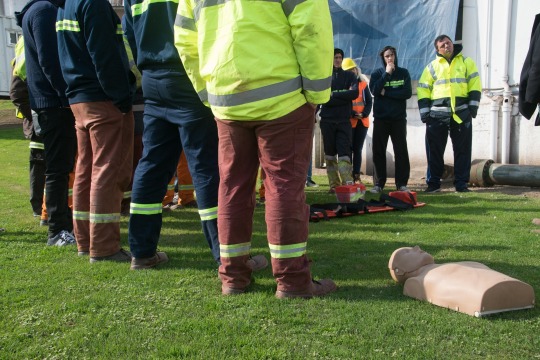
For all age groups
Both aware and unconscious choking victims are treated in the CPR and First Aid courses. People are also capable of aiding a variety of choking victims, including newborns, kids, and adults.
There are several common guidelines by the American Heart Association CPR Class Columbus for recognizing a choking victim when performing resuscitation in a group setting.
It is simple to identify a victim if they are clutching or gripping their throat. They could be unable to speak or have breathing difficulties if there is an impediment. As a result of oxygen deprivation, a choking victim may also notice a change in their skin tone and appear pale or bluish. Someone may receive first assistance if you can spot that they are choking.
Usage of Automated External Defibrillator
This course includes instruction on AEDs. People acquire the abilities and information necessary to operate the apparatus. People can learn when and how to use the AED in this training. Learning how to use the AED on newborns, children, and adults is a requirement for CPR/AED certification.
Learning First Aid
People can learn how to handle a variety of unplanned emergencies through first aid, which is wide. The ability to relieve suffering and stop the victim from getting hurt worse is a skill that people possess. It requires the expertise to handle a variety of first aid problems, including hypothermia, frostbite, heat illness, stroke, seizure, fractured bones, muscular injuries, poisoning, burns, and bleeding.
General people learn how to handle those afflicted by any of the aforementioned conditions effectively. Additionally, they pick up the skills necessary to treat patients and control their illnesses. According to the degree of the injury, first aid training also teaches how to treat injuries to various body parts.
First Aid certification need
Recognition of various injury kinds is a requirement for first aid certification. It also includes evaluating the mental state of accident victims. One also gains knowledge on when and how to evacuate hurt people in an emergency. A person also knows how to spot people having trouble breathing and help them resume normal breathing.
Heimlich maneuver
As a proven technique for assisting a conscious choking victim, the Heimlich maneuver is widely recognized and practiced. Put one foot in front of the other to increase stability while backing up the victim. Put one hand in a fist and grab it with the other, then wrap your arms around the victim's waist. The victim should have your fisted hand just above the navel. To clear the obstruction, quickly inhale and exhale upward up to ten times.
Reach us
In case you want to enroll yourself to assist the friends and family of choked victims, get in touch with CPR Class Columbus for holistic training. Dial 614-321-2094 or go to https://acls-bls-columbus.com/ for complete details.
0 notes
Text
Fundamental First Aid Principles With CPR Columbus
It's crucial to understand some fundamental first aid principles if you have elderly parents or family members living in your house. Even if they are currently active and strong, older adults are frequently more susceptible to numerous injuries than younger people.
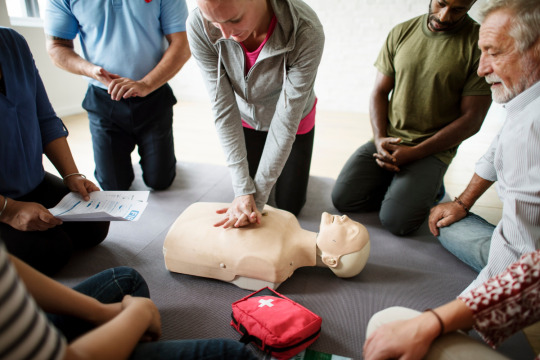
Here are some fundamental first aid techniques you should be familiar with CPR Columbus tutelage, as well as some fundamental health dangers that older persons, in particular, should be aware of.
Fall prevention therapy
Aging commonly results in decreased motor skills; coordination, muscle strength, and eyesight, seniors are more susceptible to falls. Some drugs might cause dizziness or quick reductions in blood pressure, which increases the risk of falls in seniors. And while younger people are likewise susceptible to trips and unpleasant falls, a senior is much more likely to get a major injury as a result. A senior who is independent and active can become bed-bound after one fall.
Follow-up action
Don't attempt to pick up an elderly loved one right away if they fall. Instead, make an effort to determine whether they have any wounds. Try to determine whether they are hurt by speaking with the person and asking them questions. Call 911 right away and follow the dispatcher's first aid instructions if the person is unconscious or looks to be experiencing a stroke or a head injury.
For cuts treatment
As we become older, our skin gets more sensitive and more prone to cuts and scratches. They could be insignificant or quite serious. Band-Aid should not always be used to cover superficial injuries; instead, they should be cleaned and treated with antibiotics because they occasionally heal more quickly when left exposed to the air.
But more significant medical attention is required for deeper wounds. The best way to stop bleeding from a cut is to apply pressure to the site while covering it with a sterile bandage or clean cloth. To further stop the bleeding, raise the hurt body part over the heart. Dial 911 if the cut seems serious or if it won't stop bleeding.
Cardiovascular emergency first aid
Heart attacks can cause tightness or pain in the chest or upper abdomen, which may radiate to the shoulders, arms, neck, or jaw. They can also cause lightheadedness, nausea, shortness of breath, perspiration, vertigo, and dizziness may also be present. But some sufferers of heart attacks don't feel anything at all.
Please dial 911 immediately if you think someone you care about is experiencing a heart attack. Before receiving medical assistance, you must follow the first aid recommendations provided by the dispatcher.
Learn how to avoid exposure, sunburn, and sunstroke
Elderly people, especially those with chronic conditions, are more susceptible to temperature changes. Whether it's hot or chilly outside, seniors should always wear sunscreen when they go outside. They must dress in enough layers to cover all of their exposed skin if it is cold. They will need to drink plenty of water and use sunscreen if it's hot.
If you are fascinated by the training, you may enroll yourself in CPR Columbus for a holistic transfer of knowledge from the best mentors in the town. For more information, dial 614-321-2094, and visit https://acls-bls-columbus.com.
0 notes
Text
Gain Hands-On Experience With ACLS Class Columbus
The implantable pacemaker, developed in 1958, is the most astonishing advancement in the world of cardiology. Since the initial implantation, the implantation method has seen significant development. To enhance implant effectiveness, battery life, and patient outcomes, several advancements have been made. The transvenous approach does have a small risk of complications, such as lead fractures, insulation breaks, pocket hematoma, infection, pneumothorax, and subclavian venous thrombosis.
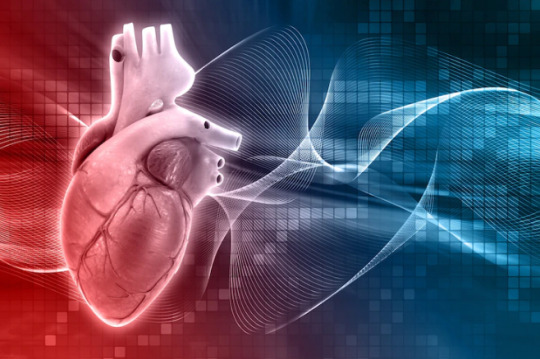
In conclusion, the pacemaker implantation procedure is an art that can be greatly improved and refined. In 2016, the Leadless Pacemaker, a new implantation approach designed to enhance the process and potentially significantly lower the rate of complication, was developed. Lead- and pocket-related issues were intended to be eliminated with the leadless pacemaker. ACLS Class Columbus mentors throw light on topics with a broader spectrum that helps the pupils to get engaged in their classes. The stress-free personalized workshop provides once in lifetime opportunities for the pupils to gain hands-on practical experience.
The development of battery technology, connectivity, and catheter-based delivery techniques has made leadless pacemakers a reality. To deliver pacing therapy, the leadless device does not require cardiac cables (leads) or a surgical "pocket" under the skin. Its size is comparable to a large vitamin capsule and is less than one-tenth the size of a conventional pacemaker. It can be installed totally into the heart through a keyhole puncture in the groin. It is aesthetically undetectable and is inserted into the heart, making it a secure substitute for traditional pacemakers.
Self-expanding Nitinol tines are used by the Transcatheter Pacing System (TPS) to fixate in the trabeculae. Since it is undetectable to the patient, it also aids in helping them recover from the trauma of the procedure and effortlessly return to their previous way of life.
Leadless pacemakers have been successful in treating patients with a history of the device and lead infection, vascular access problems (dialysis, post-cath), Twiddler's syndrome, renal failure, and tricuspid regurgitation. While the leadless device is in place, there are no bumps beneath the skin on the chest or leads that are anchored to the muscle bed. Traditional pacemakers may cause a little discomfort in some patients.
Patients with AV block have traditionally been treated with conventional dual-chamber pacemakers, which have the same size and form as the original TPS. The most recent sophisticated leadless pacemaker features several additional algorithms that can recognize cardiac activity, enabling it to modify ventricular pacing to sync with the atrium and provide "AV synchronous" pacing therapy to AV block patients. A new therapy that gives leadless pacing benefits is now available to more pacemaker users.
The holistic transfer of knowledge catered by the ACLS Class Columbus mentors would serve as the basis for the long-term professional growth of the participants. Dial 614-321-2094 or pay a visit to 5202 Bethel Reed Park, Suite 140, Columbus, OH 43220.
0 notes
Text
Mitigate Danger Through PALS Class Columbus Training
Children's care and welfare are regularly the responsibility of parents, guardians, instructors, and even babysitters. As both newborns and children cannot make the choices and take the activities necessary to keep them secure, their security depends on their knowledge and efforts.

A youngster may encounter dangers from the items surrounding him or her at any time throughout the day. The possibility of harm or even death should always be taken seriously by humans, from the food they consume to the water they bathe in. In some situations, some adults may have an innate sense of how to keep kids safe, but everyone needs to learn how to do it. PALS Class Columbus can guide the participants in dealing with the safety practices one would require during CPR emergencies. You can reach out by dialing 614-321-2094 or landing yourself at 5202 Bethel Reed Park, Suite 140, Columbus, OH 43220.
Home safety tips
For new parents, a home safety handbook is a vital resource. A helpful safety manual will teach parents what is required to establish a home environment for their children that are the least likely to cause them harm or death. What should be done before the baby's birth and throughout different stages of his or her life will frequently be included in the information. For instance, a home safety manual might cover playpen safety for infants and stair safety for kids who can walk or crawl. Additionally, it will give parents suggestions on how to make their homes safer.
Risks of choking
For young toddlers, choking poses a real risk. The majority of people tend to think of food first, yet there are many potential choking dangers all around the house. It is imperative for parents to keep these hazards out of reach of their kids and to be prepared to help them if they choke on something. In terms of food, some foods provide a greater risk than others, especially for young infants who are adjusting to or starting solid feeding. Hard candies, popcorn, gumballs, peanuts, and raw vegetables are typical items that provide a high risk of choking. When hot dogs are chopped into round pieces, they are also regarded as choking dangers.
Never let kids play, run, or stroll around while they are eating. Food preparation for children should be a priority for parents. Smaller than half-inch pieces should be used for food cutting when serving young toddlers. When your kids are eating, it's a good idea to watch them make sure they're chewing their food properly and aren't playing or running around. As choking dangers that can be found in the home, in addition to food, are things like buttons, batteries, balloons, coins, and marbles. These objects have the potential to fatally suffocate children if they get stuck in their throats.
In case of choking, the PALS Class Columbus tutelage comes in handy and provides assistance to the friends and family of the victims before the arrival of the medical team.
0 notes
Text
Attend The Workshop Of CPR Columbus Ohio
In the American Heart Association course, we go over the different stages of heat illness. While anybody can experience the consequences, individuals who may be in high-risk groups, such as children under the age of four, adults over the age of sixty-five, or those who have diabetes, heart disease, or mental illness, are at particular risk.

What separates heat exhaustion from heat stroke?
The "heat island effect" is a phenomenon that affects people who live in urban areas and causes greater nighttime temperatures because it is caused by the absorption of heat by roads and buildings during the day and the subsequent sluggish release of that heat at night.
Heat exhaustion and heat stroke are the two stages of heat illness (hyperthermia) that are most frequently named. Share the knowledge from the CPR Columbus Ohio experts to enhance your skills.
A heat-related ailment called heat exhaustion, also known as heat prostration or heat stress can occur after being exposed to extreme temperatures. Dehydration is frequently present in addition to it. In most cases, water or salt depletion is the cause of heat exhaustion.
The body can sweat off up to 2 kg per hour in high temperatures, over several hours. Blood plasma is the source of the bodily fluid that is sweated. Blood is drawn into epidermal blood vessels when overheating first starts. Plasma is transported to the skin by sweat glands so that it can evaporate and cool the body.
High activity aggravates the issue because the working muscles now need blood in addition to what is needed for cooling. Due to the inability to maintain the blood pressure required to deliver blood to the brain, this may initially cause fainting. People who experience overheating may occasionally pass out when resting rather than while exerting themselves because the lower body's muscle action prevents blood from clotting in that area.
In addition to the above, there are other symptoms of heat exhaustion:
● Cramping in the stomach or muscles
● Thin skin
● Abundant perspiration
● Dark-colored urination (a sign of dehydration)
● Dizziness
● A quick, weak heartbeat or pulse
● Fainting
● Fatigue
● Headache
● Vomiting, diarrhea, or nausea
It is crucial to remove the person from the heat and give them time to relax if these symptoms are seen. The removal of tight or superfluous clothing will aid in recuperation, as will drinking plenty of water (no coffee or alcohol). Get the person into a chilly shower or bath if you can. Fans and other cooling techniques, including cool, damp towels, can also be employed. Emergency services should be called if these methods don't offer relief in 15 minutes since heat stroke could be developing.
When more minor heat-related ailments are not treated and extended exposure to high temperatures, heat stroke (also known as sunstroke) might happen. When a person has a heat stroke, their core body temperature is typically over 105 degrees Fahrenheit, and their neurological system may also be affected.
It’s always better to be on the safer side by undergoing training from a reputed institute like CPR Columbus Ohio at 5202 Bethel Reed Park, Suite 140, Columbus, OH 43220.
0 notes
Text
Know The Associated Peril With CPR Class Columbus
Cardiopulmonary Resuscitation, sometimes known as CPR, is an emergency procedure used to restart a person's breathing and heart during cardiac emergencies. How successful is it, though? What risks and adverse effects are typical? What does it signify for that person's long-term health if they are fortunate enough to survive a cardiopulmonary emergency?

The American Heart Association's most current statistical analysis shows that 88% of out-of-hospital cardiac arrests take place at home, where there are no doctors or nurses, which is why everyone must be trained. Until the victim has ROSC, the rescuer must keep performing CPR on the patient. The chance of survival for a victim of an out-of-hospital cardiac emergency can be tripled by the typical bystander who is trained. In contrast, only about 32% of cardiac arrest victims who are outside of a hospital are likely to receive from a layperson. Get enrolled in CPR Class Columbus to know the different facets of tutelage along with the risks.
What dangers come with CPR?
Many people's conceptions are shaped by movie situations in which successful resuscitation always occurs and patients recover quickly. However, if the heart isn't beating properly, the brain may not receive adequate blood flow. Furthermore, even if resuscitation is successful in restarting the heart, some brain damage in people may still take place.
The recovery of cardiac arrest survivors, on the other hand, will rely on several factors, including what caused it and how healthy they were before the cardiac arrest, whether it is administered and is successful. Some patients who undergo successful resuscitation make a full recovery, while others remain seriously ill and require more care. For this reason, post-cardiac arrest care is a crucial part of advanced life support.
What is HIBI?
The most common reason for death in patients who remain comatose after being revived from cardiac arrest is hypoxic-ischemic brain damage (HIBI). The cessation of life-sustaining measures after a poor neurological prognosis results in the majority of HIBI-related deaths. The severity of HIBI in these patients can be used to predict a poor neurological prognosis, such as death from a neurological cause, a protracted vegetative state, or severe neurological disability.
Does life return to normal for cardiac arrest survivors following CPR?
Unfortunately, the majority of people who experience a cardiac arrest outside of a hospital do not recover. A full recovery is significantly less likely for people with complex medical issues. You must be aware that patients who get resuscitation frequently become critically ill and may require additional care in an intensive care or coronary care unit to recover. Additionally, after leaving the hospital, those who have survived cardiac arrest report cognitive impairment, mobility restrictions, depression, and limited social interaction.
Undergoing training from a reputed institute like CPR Class Columbus can be helpful to a great extent. You can always visit the site for fair understanding at 5202 Bethel Reed Park, Suite 140, Columbus, OH 43220.
0 notes
Text
Where Do I Begin The CPR And BLS Training?
Even though they may seem implausible, emergency circumstances can happen anywhere, anytime. People who don't want to deal with emergencies won't be forced to. Prepare for the potential of an emergency rather than living in the hope that you won't have to deal with one. Get ready to change the world.

There are multiple ways in which emergencies can present themselves. They can be anticipated in a variety of ways, too. There is a lot of knowledge and education available now more than ever before because of the internet era. Emergency preparedness education and training are no different. In actuality, there are several internet resources for learning Resuscitation and first aid. Since it occurs frequently, picking a course of action might be challenging. Where should one begin with all the available options? The best option would be to get in touch with CPR Class Columbus for holistic training.
Determine why the training is required before choosing a location for classes. Do you have kids? Are you a child therapist? Need to provide young people with specialized training? Looking to add a new qualification or expertise to your CV to make it stand out? Or do you simply want to bolster your toolkit with some instruction in CPR and AED? Alternatively, perhaps you want to improve your first aid reaction skills.
First aid may be required in a range of situations, from simple ones like a paper cut to serious ones like a sporting injury. It is hard to plan for limited scenarios because there is such a wide range of potential causes for first aid responses. Instead, it is advised to have a broad understanding of first aid demands and their treatments.
Blood and other physiological fluids can become visible due to a variety of diseases and injuries. These physiological fluids could be contaminated with pathogens such as hepatitis, HIV, and AIDS viruses. The patient and the responder will benefit from being aware of the dangers and necessary safety measures when it comes to these biological concerns. Responders might range from janitors to emergency medical technicians. Training on workplace safety, PPE use, and fluid handling techniques are crucial for these individuals as well as those who may come into contact with bodily fluids. Only those who are properly informed and equipped to handle these fluids and their risks can prevent the possible spread of disease.
When emergencies arise, be ready so you won't be taken off guard. You never know when you'll need to put these abilities to use. There is no better time than the present to improve your education and training. Still, thinking? Visit the site of CPR Class Columbus to introspect the tutelage of the mentors.
0 notes